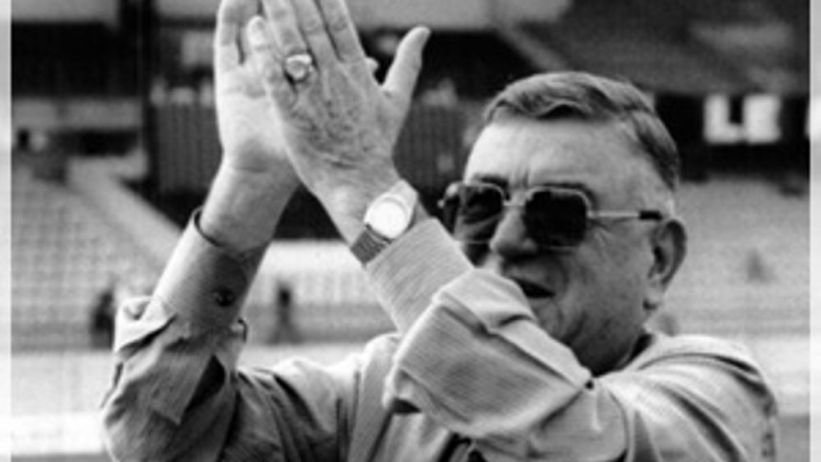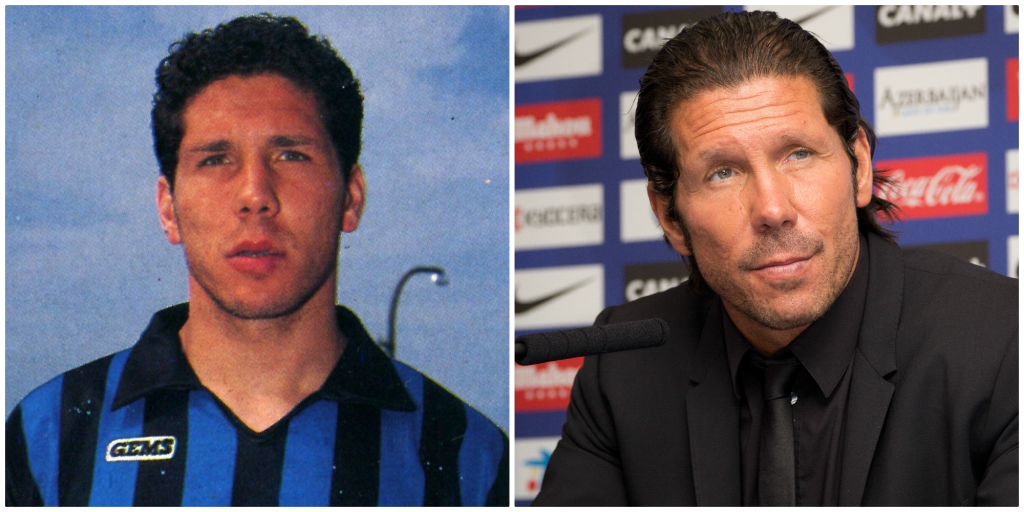It is deadline day in the summer of 1990. The pressure is on the President of Pisa, Romeo Anconetani. He had promised a big signing, but none had entered the door. The Pisa fans had seen the likes of Paul Elliott and Dunga join the club in recent years, no small feat considering the stature of the club.
But time is ticking away. At the last minute Anconetani is handed a dossier full of young and promising players from Argentina. A decision needs to be made. “I like him,” declares the President. “He has a determined face.” That face belonged to a young Diego Simeone.
“My parents,” Simeone said, “raised me to play football like a soldier.” Simeone already had the DNA of the warrior he would become. At his local side, Vélez Sarsfield based on the edge of Buenos Aires, Simeone learned about standards.
It became normal for him to wash his own kit, to respect his coach and senior players. The nickname given to him of “Cholo” smacks of grinta – a dogged determination originating from the streets. But compared to a lot of his compatriots, Simeone had a relatively privileged upbringing. His father was a successful salesman while his mother was a hairdresser. It was his parents who urged him to move to Europe when he got the chance.
Just turned 20, Simeone landed in Pisa. It was a world away from where he had grown up. It was a quiet town, bar the Campo dei Miracoli where tourists are bundled off coaches to see the sites.
As soon as he could, Simeone had his family come from Argentina: his dad, mother and little sisters. In the 1990s, Italy was the place to be for football, boasting the greatest league in the world and its accompanied riches. At Velez Sarsfield he was on roughly 18 million lire a year, at Pisa 90 million. Despite it being a fraction of the senior players’ salaries, it was a huge leap for the lad from Buenos Aires. He declared to friends his life had changed. He was rich.
He was also still a boy. Many South American players moved to the peninsula at this time, but few at the tender age of 20. And few took the new surroundings with such ease.
Already it was clear Simeone was a professional. And what a professional. His commitment, passion and aggression took the senior pros by shock. Even coach Mircea Lucescu was taken aback. Who was the Argentine youngster? This passion especially prevailed on match day.
During the first game of the season, Simeone made his mark. Away at Bologna, a side who would go on to reach the quarter-finals of the UEFA Cup that season, he ran the show in midfield. His combative style worked wonders. Pisa started the season with three points.
The following week Simeone came up against someone who would become a familiar foe. Antonio Conte travelled north with his Lecce side. The Lecce youth product was widely regarded as the best young central midfielder in the land. But on this day Simeone would shine.
With Pisa already 1-0 up, Cholo received the ball at the edge of the box. He flicked the ball over a defender with his right foot and then hammered home a volley with his left. It was an incredible goal which capped his man-of-the-match performance and helped the Nerazzurri reach top of the table by the end of week two.
But Simeone was also quickly gaining a reputation as a bad boy. This was despite him never smoking and hardly drinking. Instead he would sip on a glass of mate, the national drink of Argentina. The traditional South American caffeine-rich infused drink was not to the local’s liking – but Simeone loved it. He would have a glass on the balcony of his apartment in the heart of Pisa while singing the songs of Argentine barras baravas. Simeone took delight at teaching his friends and teammates River chants too, particularly those used to insult Boca.
Despite Simeone producing performances well above his years, Pisa could not keep up their brilliant start. In fact, they were eventually relegated back to Serie B, a familiar occurrence under the tenure of Anconetani. Lucescu left shortly after and Simeone was now the club’s most valuable asset.

Promotion, Salting and Simeone: The story of Romeo Anconetani and Pisa
Anconetani did not want Simeone to go to an end-of-season international friendly at Wembley. But Cholo was a key part of the young generation of Argentine stars who were set to replace the group which had been so successful in the past two World Cups.
The game finished 2-2 and was seen as the coming of age match for many of the Argentine youngsters. Typically, Simeone was combative against the established England stars, picking fights with the likes of David Batty and Stuart Peace. Those back in Pisa were left biting their nails.
Simeone returned to Pisa with a battered leg but a growing reputation. He would struggle with injuries in his second campaign in Italy, but was still instrumental in Pisa finishing sixth in Serie B.
By now the biggest clubs in Europe were circling. Simeone had proved in back-to-back seasons he could consistently put in brilliant, battling displays. Lucescu’s prophecy of Simeone becoming one of the strongest midfielders in Europe had come true.
Pisa could not hang on to such a talent for another season in Italy’s second tier. He was sad to leave Pisa, which had become a home to him, but Simeone knew he had to move on. Joining up with his compatriot Maradona and legendary coach Luis Aragonés, Simeone continued his progression as a combative midfielder.
The Nerazzurri called again, but this time in the shape of Inter. Simeone joined in 1997 to replace Paul Ince and instantly fell in love with the club. Despite helping the side claim the UEFA Cup as well as a second-place finish, he was forced out of the club by Massimo Moratti in 1999 as part of the deal which saw Christian Vieri move to the San Siro.
In the blue of Lazio, Simeone would once again shine. Under Sven Goran Eriksson, he would win the domestic double of Scudetto and Coppa Italia, with Simeone scoring a crucial headed winner away at Juventus in the final weeks of the season.
After retiring in 2006, it was quickly established that Simeone would be a coach. Again, Italy would prove to be a crucial learning curve for Cholo. In January 2011 he was given the job at Catania, after being out of work for nine months following his failure at San Lorenzo. Gli Elefanti had lost four of their last six games and were just three points above the relegation zone.
Quickly, though, Simeone turned things around. With his band of 12 Argentines and switching to a narrow 4-3-1-2, Simeone led Catania to a 13th place finish, 10 points clear of the drop. Just months later, he was in charge at Atletico Madrid.
It was, however, his time at Pisa that had the biggest impact on Cholo. Still to this day, he returns to Tuscany to watch Pisa and meet up with friends. He originally came to Italy as an unknown and left as a rising star. He proved he could mix it with the best and his combative style won him many admirers. But more importantly, his Argentine values had been reinforced. In Pisa, Simeone truly transformed from a boy into a man.

